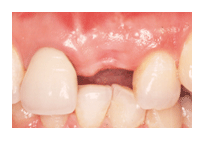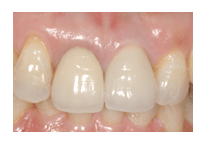Ask Our Dentist
contact@phuketsmiledental.com
Ask Our Dentist
contact@phuketsmiledental.com
Dental Implantology is the new generation when it comes to Restorative Dentistry or in replacing missing tooth/teeth. While other forms of replacement like Dentures or Dental Bridges use the other teeth and surrounding tissues to gain support, Dental Implants make use of the jaw bone structure to gain support for the replaced teeth. This makes dental implants a far more superior type of replacement and has no effects whatsoever on the adjacent teeth that are present in the mouth.
Dental Implants are fixtures of Titanium which are surgically screwed into your jaw bone. Titanium is a metal that has the property of Osseo integration, which means that over time there is bone growth over the implant and the implant gets fused with the jaw bones. Dental Implants are not only used to replace one tooth, but those missing most if not all of their teeth, benefit greatly as well. They are increasingly being used to replace certain types of bridges and removable partial dentures.
If you're missing one tooth or all of your teeth, Dental Implants may well be for you. So long as you have enough bone in the area of the missing tooth to facilitate the anchorage of the implants, then this procedure can yield terrific results. If you don't have enough bone for this purpose, a Bone Graft and or Sinus Lift may be necessary. If you have removable types of replacement like dental bridge or dentures , Implants will be a welcome alternative. Implants are also an alternative to a fixed bridge. A Dental Implant will last a lifetime if cared for properly.
A standard Dental Implant procedure would consist of three stages. First, the Teeth Implant (or Implant Screw) is placed on the jawbone. The gum where the Implant is to be placed is cut and lifted and a small hole is drilled in the jawbone at the precise location of the intended implant. The Titanium Implant is then tightly fitted into this socket and the gum is stitched back over and is left to heal and integrate with the jawbone. Next, over this implant screw, the tooth replacement needs to be placed. A part known as the Abutment is tightened into the implant screw. The Abutment will rise up over the surface of the gums and is seen like a projection from the jaw bones. It will form the support for the last stage of the procedure which is overlying an esthetic replacement of the tooth known as the Dental Crown. The Crown will be made up of a tooth colored material like zirconium or porcelain fused to metal to give an esthetic appearance and will be cemented onto the Abutment to hold it in place and to perform its functions effectively. Alternatively, the implant might support a group of teeth instead of just supporting a single tooth replacement. In such a case, instead of a Single Crown being placed over the abutment, there will be a Bridge (Permanent Fixed Porcelain on Implants) or a Denture (OverDenture on Implants) that the abutment or a group of abutments are supporting.
| Before | After |
|---|---|
 |
 |